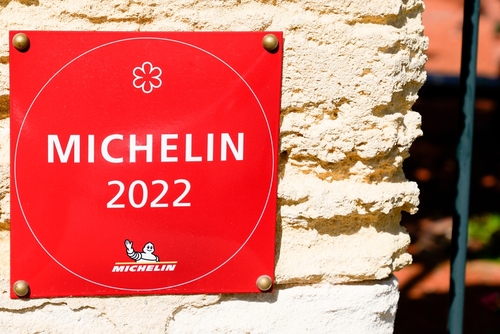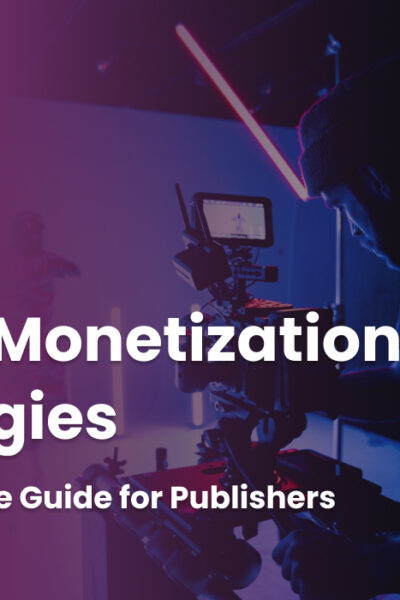The advent of digital publishing has created new ways for brands to reach audiences beyond traditional marketing.
While brand publishers have been around for more than a century — think Michelin and John Deere — the digital world has allowed organizations of all sizes to enter the space.
Brands now have easier access to the printing tools, video and audio equipment, and audience platforms used by major media companies. Moreover, the talent pool of experienced publishing professionals is now larger than ever, making it easier for brands to find experienced staff members to develop their media divisions.
Brands are now able to mimic the publishing operations of traditional media companies: creating content, building audiences and communities, populating social media streams and even becoming thought leaders.
All this allows them to tell their stories directly to the audience.
Table of Contents
What Are Brand Publishers?
Brand publishers are businesses that seek to entertain, educate and directly engage with their audience by producing and distributing content through their own media channels.
A great example of this is Netflix’s launch of Tudum in December 2021, with the publication dedicated to covering the development of the streaming service’s original content.
CRM software leader Salesforce, meanwhile, launched the Salesforce+ streaming service in August 2021, featuring original programming about entrepreneurship.
Many brand publishing activities overlap those seen in the traditional media space, including:
- Writing articles and columns
- Commissioning photos, art and graphic design
- Producing newsletters, magazines and catalogs
- Recording podcasts, music and interviews
- Creating video
- Operating websites and social networks as means of distribution
Brand publishers operate under many of the same principles as advertisers and marketers. Their goal is to engage, position and, ultimately, sell. Yet they have also adopted the purpose of traditional media companies — namely to entertain, educate and influence. They build audiences as large as possible while attempting to retain as many readers or viewers for as long as possible.
There are several notable ways that brand publishers stand apart from traditional marketing operations.
Operational Flexibility
Traditional advertising and marketing operations often work as part of larger structures, are essentially a marketing expense and sometimes serve multiple masters.
While some brand publishers might operate from the same blueprint, there is also the potential for greater operational flexibility. They have the opportunity to be independent enterprises that develop unique messaging and are able to monetize their content.
The Austria-based Red Bull Media House is a perfect example of this evolution. It was launched in 1987 to produce themed content, before evolving into a fully independent studio in 2008. The company has more than 150 employees and generates over $520 million in annual revenue.
While advertisers and content marketers typically target potential audiences with specific, time-sensitive messages about products and services, brand publishers lean towards entertaining and informing their audiences without trying to directly sell a product or service. The goal is to create audience buy-in.
At the same time, however, brand publishers do differ from traditional publishers.
Brand Publishing Within the Wider Media Landscape
Brand publishers sit somewhere between content marketing and traditional publishing outlets when it comes to their audience goals.
The content that brand publishers produce can be judge across a range of KPIs, including:
- Building brand awareness
- Increasing audience numbers
- Driving audience engagement
- Generating self-sustaining revenue
- Creating conversion opportunities
Content Marketing
Content marketing and brand publishing both focus on creating and distributing high-value content that resonates with a target audience.
Where the two often differ, however, is how they measure success. Content marketers see content purely as a means to an end — conversions. Content is seen as a necessary business expense, without which audience building would be infinitely more difficult and sales more elusive.
Brand publishers, however, see great content as the end goal. It is core to their business model and its success can be measured by profitability, audience engagement, traction with other media, etc.
When it comes to content, brand publishers also put the audience first. They don’t ask: what does the audience need to know about my brand? They begin with: what content would my audience like to see? And how can I bring them value?
The audience-first focus demands a more consistent publishing schedule than that seen in content marketing and resembles something more akin to that of a traditional media company.
Instead of releasing campaigns to coincide with companies’ actions — such as summer and holiday sales — brand publishers distribute content on consistent schedules. This may be a weekly blog, a monthly magazine or daily articles.
Media Publishing
Media publishers are characterized by the diversity of their offerings, their independence and their impact on wider society.
Media publishers are multi-dimensional and span many sectors. They often play the long game, understanding that it can take years to build audiences, standardize style and refine their voice. This is the strategy brand publishers are replicating. They need their content to build a reputation for excellence.
Where the two differ, however, is in their monetization strategies.
Revenue in Review
Media publishers have few monetization strategies, with the two core pillars being subscriptions and ad revenue. Ad revenue almost always comes first, followed by subscriptions once output is consistent enough that regular followers are willing to pay for access.
Of course, media publishers’ push for a greater reliance on subscriptions for revenues has created a new conversation around inclusivity and whether outlets should be closing their doors to those who can least afford to pay for news.
However, brand publishers do not depend on either ad revenue or subscriptions to preserve their existence enabling greater accessibility. Brand publishers can monetize their content in ways that most traditional publishers would likely shy away from, owing to concerns over reputational damage.
The Michelin guide is a prime example of this. The guide has received numerous contributions from various tourism boards over the years, with motivations ranging from the guide entering a new market to particular cities being able to host branded events.
Brand publishers do benefit from the fact that they are not expected to adhere to the same ethical standards as traditional media outlets.
Brand Publishing Advantages
While brand publishing allows companies to develop themselves as industry thought leaders and connect with audiences on new levels, its benefits don’t stop there.
1. Audience Reach
Brand publishing allows companies to connect with audiences in ways that traditional marketing strategies miss.
Marcus, Head of Growth from Kiindred, argues that publishers’ traditional reach model is evolving. There’s a greater need to diversify audience reach in a ‘cross-platform’ capacity rather than just using your website as an owned source.
Modern media consumers are more open than previous generations, though less trusting. In other words, they are generally willing to spend time with content from unexpected sources.
While gaining audience trust is harder than ever before for any media outlet, this is not such a disadvantage for brands.
Media companies are held to a higher standard, and audiences implicitly understand that brand publishers prioritize profit over the “public interest.” Advertisers and marketers have long had to overcome a general distrust of their messaging.
However, with audiences now willing to spend time with new media sources, brand publishers have more opportunities than ever to win consumers over.
The other audience effect is internal. Brand publishing forces organizations to completely rethink who their audience is.
Potential customers — who are characterized by one dimensional needs — suddenly become three-dimensional audiences that consist of followers, viewers, readers and listeners. The brand can also benefit from new forms of audience-driven engagement and awareness, without the negative associations of a sales campaign.
Michelin is viewed as the barometer of world-class dining experiences, while Red Bull has become synonymous with both extreme and motor sports.
2. Brand Perception
Brand publishing’s main goal is to shape the public perception of a brand. It changes how people view and speak about the brand and seeks to build awareness and loyalty.
A recent study found 71% of consumers expect brands to personalize their outreach programs, with 76% expressing frustration when there was no such effort on the part of the business. It is more important than ever for brands to reach the right audience at the right time with the right message.
3. Trust Economy
Simply put, when brand publishing is done well over time and people buy into it, it builds trust. And that trust is an invaluable resource, translating directly to loyalty, growth and profit.
Building trust is not easy, as shown by the fact that trust in media, industry and politicians is in chronic decline. But when companies build trust with consumers they create opportunities to create brand advocates and earned media such as reviews.
Brand publishing is one way to build that trust, developing lines of communication not just externally but also internally.
Salesforce CEO Marc Benioff argued in late 2021 that to become a trusted enterprise, companies must focus on building internal trust before moving on to establishing consumer trust.
“In a world of so much mistrust, being a trusted enterprise means making trust your highest value,” Benioff said.
Customer-first brand publishing is an effective means of building that trust.
4. Leads to Growth
Brand publishing can help to accelerate a company’s marketing strategy. Branded content, a cousin to branded publishing, is already commanding a larger share of marketing budgets.
Branded content involves brands partnering with media publishers to create bespoke advertorial style campaigns. An example of this was international bank HSBC’s partnership with Guardian Labs to create and then run a branded content program centering on US immigration. The campaign led to a 70% increase in immigrants considering HSBC’s international banking services.
Branded publishing is the logical evolution to branded content, with companies investing in production and publishing teams to control the message through its entire lifecycle.
The simplest example of brand publishing is blogging. It is the cheapest and quickest way to enter the space, but can quickly help shape brand perception while allowing companies to build a solid digital footprint over time.
Indeed, a recent survey revealed that 20% of marketing leaders see company blogs as one of their “most important channels” to hit their targets. It is also directly correlated to better SEO results and more leads.
5. Develops Audience Insights
The market can be an unpredictable place, with sales, prices, profits, and products ebbing and flowing. At the same time, brand publishing can serve to offset some of this uncertainty.
From a demographics perspective, brands are better placed to identify audiences and gather information about them. When done well, brand publishing can create lasting communities of potential customers.
Brand Publishing Challenges
Brands new to the publishing game can quickly find themselves drowned out by the sheer volume of global content produced each day. Without a strong editorial identity, brands looking to create and share content run the risk of sounding bland and repetitive.
What makes the brand unique? How does this translate into voice? Finding answers to these questions is essential to providing original content that is capable of capturing an audience’s attention.
Building Editorial Core Competency
Building quality and competency typically requires hiring external talent. In-house technical and marketing expertise is one thing, but building a publishing business will require new skill sets and competencies that must then be nurtured.
Cost and Consistency
The media market is already crowded and striving to make a mark on the landscape and turn into an expensive arms race.
While the cost of launching a digital magazine or blog can be relatively low at the start — costing as little as a few hundred dollars per month — costs can easily escalate into the hundreds of thousands in line with the brand’s need for presence and polish.
The brand may need to gain traction quickly, but this comes with the associated risk of overextending. Netflix’s Tudum is one example of overreach. Just five months after launching its editorial arm, the streaming giant laid off around 5% of the Tudum staff.
Brand Publishing: A How-To Guide
The road to becoming a brand publisher is relatively simple — begin with small pieces of content, invest in SEO, move on to developing short videos and in-depth features. These are the foundations from which to expand.
Becoming a successful publisher requires more, however.
It requires investment, dedicated personnel, new systems and strategy, creativity and flexibility, reorganization and refinement, an expansion mindset, business focus and a great deal of content published consistently and over an extended period of time.
Step 1: Plan
Think big, start small. Plan for a multi-faceted publishing model even if the initial focus is on a single channel.
Begin with content marketing that is already in place. List available resources and personnel. Frame out a hierarchy and structure the basic process.
Identify a target audience and lay down some guidelines for content. Create briefs for actual articles and stories. This will help develop the editorial voice. Look at pre-existing examples where possible. Then list goals, targets and landmarks.
How will success be measured? What is the primary focus? What will the brand publishing look like ultimately? How will it affect the overarching business?
The next step is to re-examine existing financial resources and chart a course for growth. Envision where to expand once more resources are available.
Create some sample content and then engage stakeholders who might be mutually invested in the endeavor. The plan will quickly grow and take shape as new participants join the program.
Step 2: Build a Team and Evangelize
Begin internally and broaden the scope of the search. Review existing content marketing staff and then begin recruiting writers, editors, producers and perhaps a business insider as needed. The more staff available, the more extensive and diverse content can be.
Be ready to redefine roles regularly. The goal here is to develop a culture and create teams that can ultimately operate independently.
Step 3: Gauge the Audience
As the internal infrastructure takes shape it is important to spend time on identifying potential audiences. Starting this process should be relatively straightforward for most brands, given that they will already have an existing customer base to draw insights from.
But building a strategy around existing audiences is not a plan for future growth. Brands must look for new audiences to help inform the content planning stage. Some of the first questions to ask when trying to define that new audience include:
- Who are they?
- Where can they be found?
- What do they want to read?
- What do they need?
- What are their demands?
- Where are the gaps in available media?
- How should the audience respond to content?
- Where does audience interest diverge from marketing objectives?
Step 4: Envision and Create Content
These elements go hand-in-hand, as both process and strategy. The more content and articles that are envisioned, the easier content creation becomes. And the more content that’s created, the easier it will become to envision an editorial roadmap and workflow.
Consider how the team will approach story ideas and creation.
- What articles were a success?
- What blog is most popular?
- What trends will play an important role?
- What site drives the most traffic?
- Which businesses and industries are relevant?
- Where will the next innovation come from?
- What are potential competitors covering or ignoring?
A simple place to lay down roots is with a journalistic principle — beats. In other words, what subjects and areas should be covered regularly? Providing writers with specific beats helps them grow and become experts. Depth is a natural byproduct that helps better equip writers to write authoritatively and craft opinion pieces.
Another important shift is from product-heavy information to audience-based content. The more a brand publisher focuses on what benefits the audience, the more naturally the style and tone will follow.
This was Intel’s goal for iQ, which was launched in 2012. iQ sought to turn Intel’s knowledge experts into content contributors, while ditching “what content” in favor of “how content”.
Step 5: Build and Refine Content Strategy
As the writing team takes shape, it is vital to refine the editorial process(es). This is also the time to begin working with the editorial team and writers to integrate product and marketing goals.
There are many factors to consider.
- Who assigns stories?
- What goes into a brief?
- What background information do writers require?
- Where is information gathered?
- How many different people are involved with each piece of content?
- What are their specific roles?
- How is responsibility divided and how is conflict mediated?
- What is the standard for meetings?
- What are the standards for materials that move between departments?
- When is a piece ready for publication?
- How are the best writers and creators rewarded?
Vision is another element of the editorial function.
- What larger packages can be produced?
- How can multiple media be used at once?
- How can a steady stream of content be maintained?
- How can it be coordinated over time?
- Where is new material found?
When in doubt, look at the way digital media companies do things. While it is important to develop a unique editorial voice, there’s little need to reinvent the wheel when it comes to editorial workflows and processes. Indeed, many digital publishers have already answered most, if not all, of these same questions.
Step 6: Think Native
The shift outward may include moves from blogs and websites to Facebook, Twitter, YouTube, LinkedIn and Instagram.
As the publishing footprint expands, it is important to avoid a one-size-fits-all cookie cutter approach. Adjust messaging, copy, images, hashtags, layout and design to fit each medium.
Step 7: The Right Tools
Begin by tagging and tracking content, and then move to measuring and mapping impact. Finally, consolidate data metrics and refine focus.
Content from our partners
An important element in this process is researching and integrating new software and tools to streamline the process. There’s always a risk of “app creep” — when teams count on software to solve every challenge even when a simpler solution might be more appropriate — but the reality is that there are a range of editorial tools to help improve process management.
These range from editorial calendars to project management tools and communication platforms. Editorial teams need to hone their workflows as quickly as possible.
Step 8: Consistency
Having a solid system in place makes it possible to produce a steady stream of the best content without lapses — even in the face of changing personnel.
It includes a refined process, an extended set of deadlines, a well-developed calendar, and commitment to long-term goals. Regular audits should also be part of the process. Streamlining and simplifying are vital in creating repeatable content because they increase efficiency, which in turn feeds output.
Well-defined streamlined processes also open the doors wide for new incoming talent; reducing the time required for acclimation and training.
Moreover, content produced over time can tell larger stories, with greater depth and significance. It can address issues too expansive for a small stage. It can cover not only trends, but also changes in the industry and movements within economies.
In time, consistent brand publishers become marketing leaders as well as thought leaders and industry experts.
Step 9: Promotion, Expansion and Collaboration
Instead of trying to produce as much content as possible, successful brand publishers devote resources to attracting new audiences.
Expansion should be an ongoing process and included in all planning, strategy and development. It can take many forms and may be as simple as adding new staff. It can also mean increasing the frequency at which content is released.
Other important techniques for expansion include adding new media, recruiting influencers, co-creating content with existing publishers and engaging in cross promotions.
Step 10: Financial Analysis
Finally, quantify the financial benefit of the complete range of media activities. What is the impact of an article? What is the return on investment (RoI) of a shared tweet?
Brand publishers need to quantify the financial return of their content every bit as much as media companies. While they don’t face the same financial constraints as media companies, they still need to understand what resonates with their audiences so as to justify their mission.
In other words, is the content that brand publishers produce connecting with potential customers or those who might recommend it to potential customers?
Examples of Successful Brand Publishers
Michelin

The publication was distributed for free, and boomed as Europe rebuilt after World War II. It eventually covered dozens of countries on three continents and its rating system became a culinary kingmaker. The content was so high-quality, so imaginative and so consistent that the Michelin Guides became some of the world’s most trusted periodicals.
John Deere

John Deere, no stranger to machines that automate labor, quickly invested in an industrial press. At the time, The Furrow was mostly farming tips and full-page advertisements, but it had a very large target audience that was hungry for information.
It was an expert source, it had a monopoly and it made good use of new graphics and postal mechanisms. The magazine’s editors also openly focused on the lives and human stories behind the equipment.
Readers of the magazine today have the choice of digital or print versions.
Red Bull

The brand’s cornerstone was the Red Bulletin lifestyle magazine. However, it soon began producing regional and seasonal magazines in print, digital and app format.
It then grew into an advertising agency, developing multimedia campaigns for high-profile clients. This led the media house to produce content for sale, and it now creates podcasts and video, and is present in every form of social media. It also makes documentaries and licenses content to Netflix and Nintendo.
Its greatest strength, however, remains its extensive calendar of events. Red Bull commonly doubles down on its own corporate sponsorships in sports too — using its roster of 700+ athletes to create even more content. Last year, it participated in more than 1,250 events worldwide.
Honorable Mentions
Other commonly cited brand publishing leaders include:
- General Electric — GE Reports, TV shows, web series, podcasts and white papers
- Kraft and Nestle — health science and nutritional information
- American Express — financial literacy content, small business communities
Final Thoughts
As the modern media landscape continues to change, brand publishers and media companies will come to resemble one another more closely. The entry barrier to the publishing world has been lowered dramatically, and whichever organizations can find their feet and consistently produce high-quality content will reap the greatest rewards.
Even on a smaller scale, brand publishing has many benefits. It is an excellent focal point for organizations looking to rethink how marketing is used. It is flexible and can be adjusted to the scale of almost any business.
And for brands willing to rethink the content they produce, and invest in creative personnel and high-quality media products, the content can be a product.
The field is not without risk and the competition can be intense. Nevertheless, one thing seems clear — brand publishing is unlikely to vanish anytime soon.












